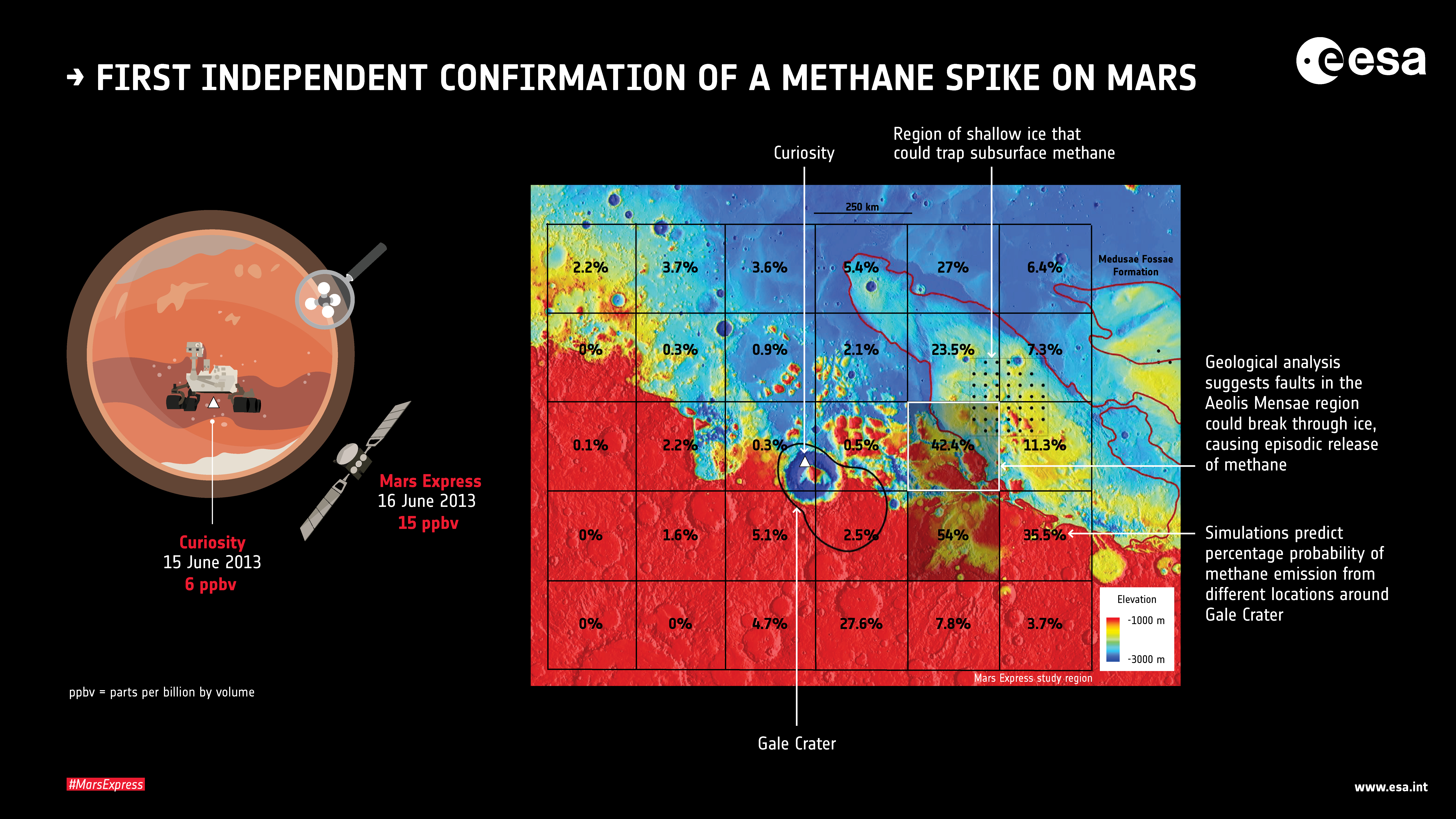
Mars Express results ESA/Giuranna et al (2019)
A reanalysis of data collected by ESA’s Mars Express during the first 20 months of NASA’s Curiosity mission found one case of correlated methane detection, the first time an in-situ measurement has been independently confirmed from orbit.
Reports of methane in the martian atmosphere have been intensely debated, with Mars Express contributing one of the first measurements from orbit in 2004, shortly after its arrival at the Red Planet.
The molecule attracts such attention because on Earth methane is generated by living organisms, as well as geological processes. Because it can be destroyed quickly by atmospheric processes, any detection of the molecule in the martian atmosphere means it must have been released relatively recently – even if the methane itself was produced millions or billions of years ago and lay trapped in underground reservoirs until now.
While spacecraft and telescopic observations from Earth have in general reported no or very low detections of methane, or measurements right at the limit of the instruments’ capabilities, a handful of spurious spikes, along with Curiosity’s reported seasonal variation at its location in Gale Crater, raise the exciting question of how it is being generated and destroyed in present times.
Now, for the first time, a strong signal measured by the Curiosity rover on 15 June 2013 is backed up by an independent observation by the Planetary Fourier Spectrometer (PFS) onboard Mars Express the next day, as the spacecraft flew over Gale Crater.

